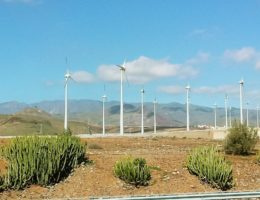1. Draft Law on Amendments to the Accounting Act – already in the Sejm.
The draft law amending the Accounting Act, the Act on certified auditors, audit firms and public supervision and certain other acts, has been submitted to the Sejm for work and the first reading took place on 15 October.
The purpose of the amendment is to expand both the circle of entities that are addressees of the obligation and the scope of the obligation itself to submit reliable, comparable and relevant sustainability information, which is in line with the objective of Directive 2022/2464. This is an important step towards supporting the transformation of corporate sustainability.
What are the new issues to be mandatorily reported?
The amendment on ESG reporting introduces new principles, by which we mean:
-
-
- Sustainability issues as environmental, social and human rights factors and management factors, including sustainability factors as defined in Article 2(24) of Regulation (EU) 2019/2088 of the European Parliament and of the Council of 27 November 2019.
- Sustainability reporting standards as standards defined by the European Commission through delegated acts issued pursuant to Article 29b(1) of Directive 2013/34/U of the European Parliament and of the Council of 26 June 2013 on the annual financial statements, consolidated financial statements and related reports of certain types of undertakings;
-
-
-
- Reporting standards for small and medium-sized entities as standards defined by the European Commission through delegated acts issued pursuant to Article 29c(1) of Directive 2013/34/EU of the European Parliament and of the Council of 26 June 2013 on the annual financial statements, consolidated financial statements and related reports of certain types of undertakings.
-
The above changes will enable a broader implementation of ESG measures in health care and protection against negative environmental impacts and, in the long term, the transformation of the EU into a modern, cost-efficient and competitive economy with zero greenhouse gas emissions by 2050.
Who will be affected by the new obligations?
We signal that the entities referred to below will be required to report on sustainability. These provisions will apply to entities that are: (i) a corporation, (ii) a limited partnership, (iii) a general partnership, (iv) a limited partnership, (v) an insurance and reinsurance company, (vi) a bank (domestic, a branch of a credit institution, a branch of a foreign bank). In determining what information should be included in the report, it will be decisive what type of entity the company, establishment or bank is. The types of these entities will be defined in detail in the Accounting Act in Article 3(1)(1a-1e):
-
- Micro entity – as an entity that, in the financial year for which it prepares financial statements, did not exceed at least two of the following three quantities (otherwise it loses its micro status):
-
- PLN 2,000,000 of total balance sheet assets at the end of the financial year;
- PLN 4,000,000 of net revenue from the sale of goods and products for the financial year;
- 10 persons of average annual full-time employment.
-
- Micro entity – as an entity that, in the financial year for which it prepares financial statements, did not exceed at least two of the following three quantities (otherwise it loses its micro status):
-
- Small entity – as an entity that is not a micro entity, which in the financial year for which it prepares financial statements did not exceed at least two of the following three quantities (otherwise it loses the status of a small entity):
-
-
-
- PLN 33,000,000 of total balance sheet assets at the end of the financial year
- PLN 66,000,000 of net revenue from the sale of goods and products for the financial year;
- 50 persons of average annual full-time employment.
-
-
-
- Medium-sized entity – as an entity that is neither a micro nor a small entity, which in the financial year for which it prepares financial statements did not exceed at least two of the following three sizes (otherwise it loses its status as a medium-sized entity):
-
-
-
- PLN 110,000,000 of total balance sheet assets at the end of the financial year;
- PLN 220,000,000 of net revenue from the sale of goods and products for the financial year;
- 250 persons of average annual full-time employment.
-
-
-
- Large entity – as an entity that exceeds at least two of the values mentioned in the average entity, whereby failure to exceed at least two results in the loss of large entity status;
- Large group – as a group which, in the financial year for which the parent company prepares consolidated financial statements and in the year preceding that financial year, exceeded, after consolidation exclusions, at least two of the three values (otherwise it loses its large group status):
-
-
-
- PLN 110,000,000 of total balance sheet assets at the end of the financial year
- PLN 220,000,000 of net revenue from the sale of goods and products for the financial year;
- 250 average annual full-time equivalent employees.
-
-
Or before consolidation exclusions, exceeded at least two of the three figures (otherwise it will lose its large group status):
-
-
- PLN 132,000,000 of total balance sheet assets at the end of the financial year;
- PLN 264,000,000 of net revenue from the sale of goods and products for the financial year;
- 250 average full-time equivalent employees for the year.
-
What should the sustainability report contain?
The provisions of the amendment also specify the content that the sustainability report should have, i.e.:
-
- a concise description of the entity’s business model and business strategy, including a description of:
a) the resilience of the entity’s business model and business strategy to risks associated with sustainability issues,
b) opportunities for the entity related to sustainability issues,
c) the entity’s plans, including implementation actions and related financial and investment plans, to ensure that the entity’s business model and business strategy take into account:
-
-
-
-
- the transition to a sustainable economy,
- imiting global warming to 1.5 °C,
- achieving climate neutrality by 2050,
- the existing risks arising from the entity’s coal, oil and gas operations,
-
-
-
d) how the entity’s business model and strategy take into account the interests of the entity’s stakeholders and the entity’s impact on sustainability issues,
e) how the entity’s strategy with regard to sustainability issues is implemented;
-
- a description of the entity’s time-bound and stated objectives in relation to sustainability issues, including absolute greenhouse gas emission reduction targets for at least 2030 and 2050, a description of the progress made towards the achievement of these objectives together with a statement whether the objectives relating to environmental factors are based on conclusive scientific evidence;
- a description of the role of the head of the entity and the members of the supervisory board or other body supervising the entity in relation to sustainability issues, and of their expertise and skills in performing that role or of the access of the head of the entity and the members of the supervisory board or other body supervising the entity to such expertise and skills;
- a description of the entity’s policies with respect to sustainability issues;
- information on the existence of incentive schemes offered to the entity’s manager and members of the supervisory board or other oversight body in relation to sustainability issues;
- description:
-
- the due diligence process implemented by the entity in relation to sustainability issues, including processes in line with EU legislation,
- the main actual or potential adverse impacts related to the entity’s own operations and value chain,
- any actions taken by the entity as part of the due diligence process to prevent, mitigate, remedy or remove actual or potential adverse impacts and the outcome of those actions;
-
- a description of the most significant risks to the entity in relation to sustainability issues, including a description of the entity’s main dependencies on these issues and how the entity manages these risks;
In contrast, for standards for small and medium-sized entities, sustainability reporting includes:
-
-
-
- information on the entity’s own operations and its value chain, including its products and services, business relationships and supply chain;
- references to and additional explanations of other information in the management report, and references to and additional explanations of amounts reported in the annual financial statements.
-
-
When will the new sustainability reporting standards have to be applied?
We would like to inform you that the legislation will come into force 14 days after its announcement. Therefore, we believe it is important to actively monitor the progress of the parliamentary work, as the current stage is one of the last before the bill is signed by the President and promulgated.
For more information on the bill, as well as details on sustainability reporting, see the link below: https://legislacja.rcl.gov.pl/projekt/12381804/katalog/13036022#13036022



